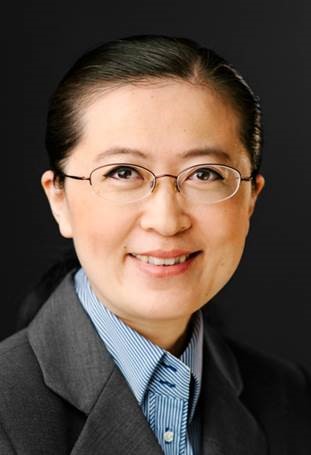【百家大讲堂】第309期:Aggregation-Induced Emission: Materials and Biomedical Applications
讲座题目:Aggregation-Induced Emission: Materials and Biomedical Applications
报 告 人:刘斌(新加坡国立大学 副校长)
时 间:2020年1月6日(周一)9:30-11:30
地 点:中关村校区研究生教学楼101报告厅
主办单位:研究生院、材料学院、国际交流合作处
报名方式:登录北京理工大学微信企业号---第二课堂---课程报名中选择“【百家大讲堂】第309期:Aggregation-Induced Emission: Materials and Biomedical Applications”
【主讲人简介】

Bin Liu received BS degree from Nanjing University and Ph.D. degree from the National University of Singapore (NUS) before her postdoctoral training at the University of California, Santa Barbara. She joined the Chemical and Biomolecular Engineering Department of NUS in late 2005. She was promoted to Associate Professor in 2010 and was named as Chair Professor in 2014. Her current research focuses on organic nanomaterials for biomedical and energy applications. Dr. Liu has received many highly prestigious awards, including Singapore President’s Young Scientist Award 2008, L’Oréal Women in Science National Fellowship 2011, Asia Rising Star 2013, BASF Materials Award 2014, Materials in Society Lectureship 2015, Singapore President’s Technology Award 2016, Asian Scientist Top 100 List in 2017 and ACS Nano Lectureship Award 2019. Dr. Liu was named as The World’s Most Influential Minds and the Top 1% Highly Cited Researchers in Materials Science by Thomson Reuters and Clarivate Analytics during 2014-2019. Dr. Liu is the Fellow of Singapore Academy of Engineering, Asia-Pacific Academy of Materials, the Royal Society of Chemistry and serves as the Deputy Editor for ACS Materials Letters.
【讲座信息】
The recent years have witnessed the fast grow of fluorogens with aggregation-induced emission characteristics (AIEgens) in biomedical research. The weak emission of AIEgens as molecular species and their bright luminescence as nanoscopic aggregates distinguish them from conventional organic luminophores and inorganic nanoparticles, making them wonderful candidates for many high-tech applications. In this talk, we discuss the latest advancement of AIEgen empowered reactivity-based theranostic bioprobes. We highlight our efforts in recent years in formulating reactivity-based organic biosensing/imaging probes and multifunctional theranostic probes as well as in utilizing these bioprobes in detecting various chemical species in living systems, and in diagnosing and treating cancer and bacterial infections. We seek to further stimulate research activities and closer collaborations among the research fields of chemistry, materials, and biology to push the boundary of AIE research and promote reactivity-based theranostics for practical applications and clinical translations.






